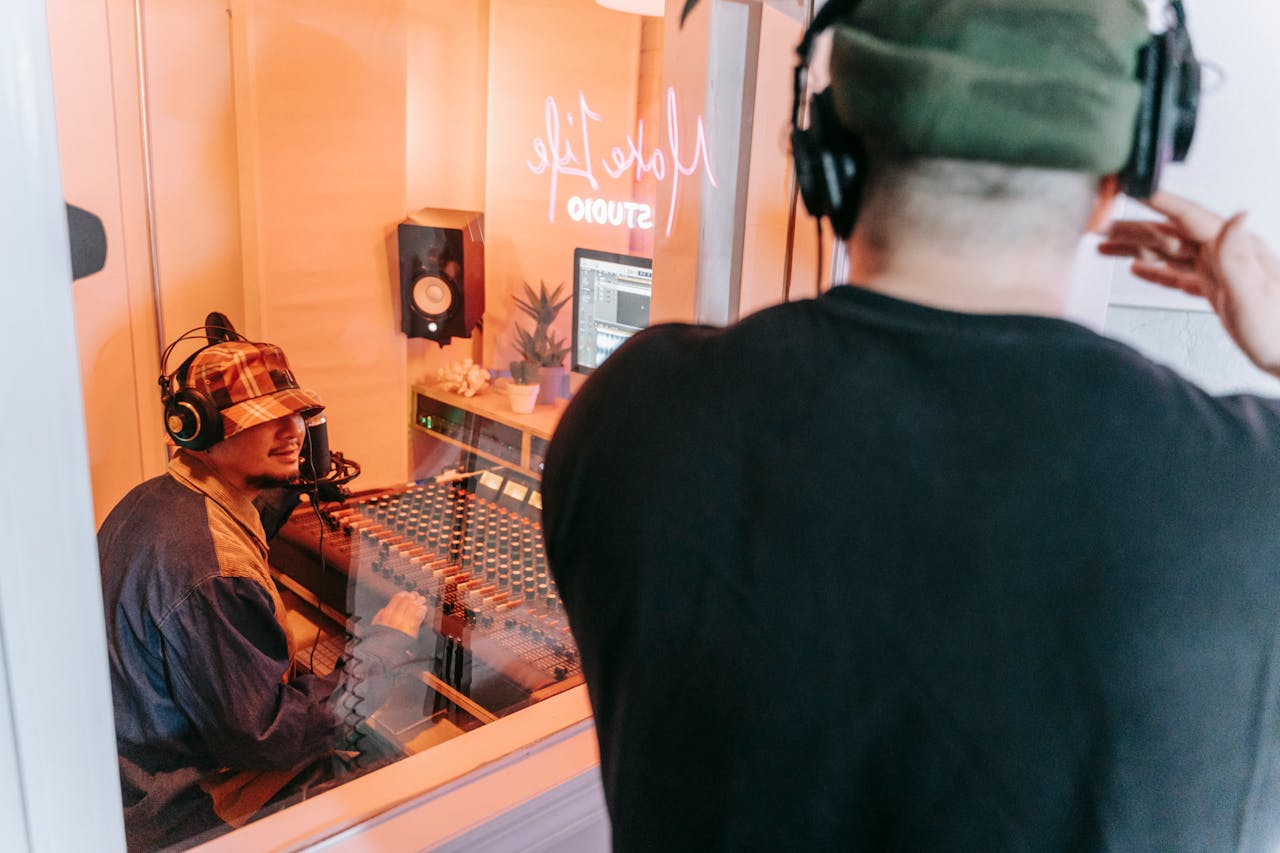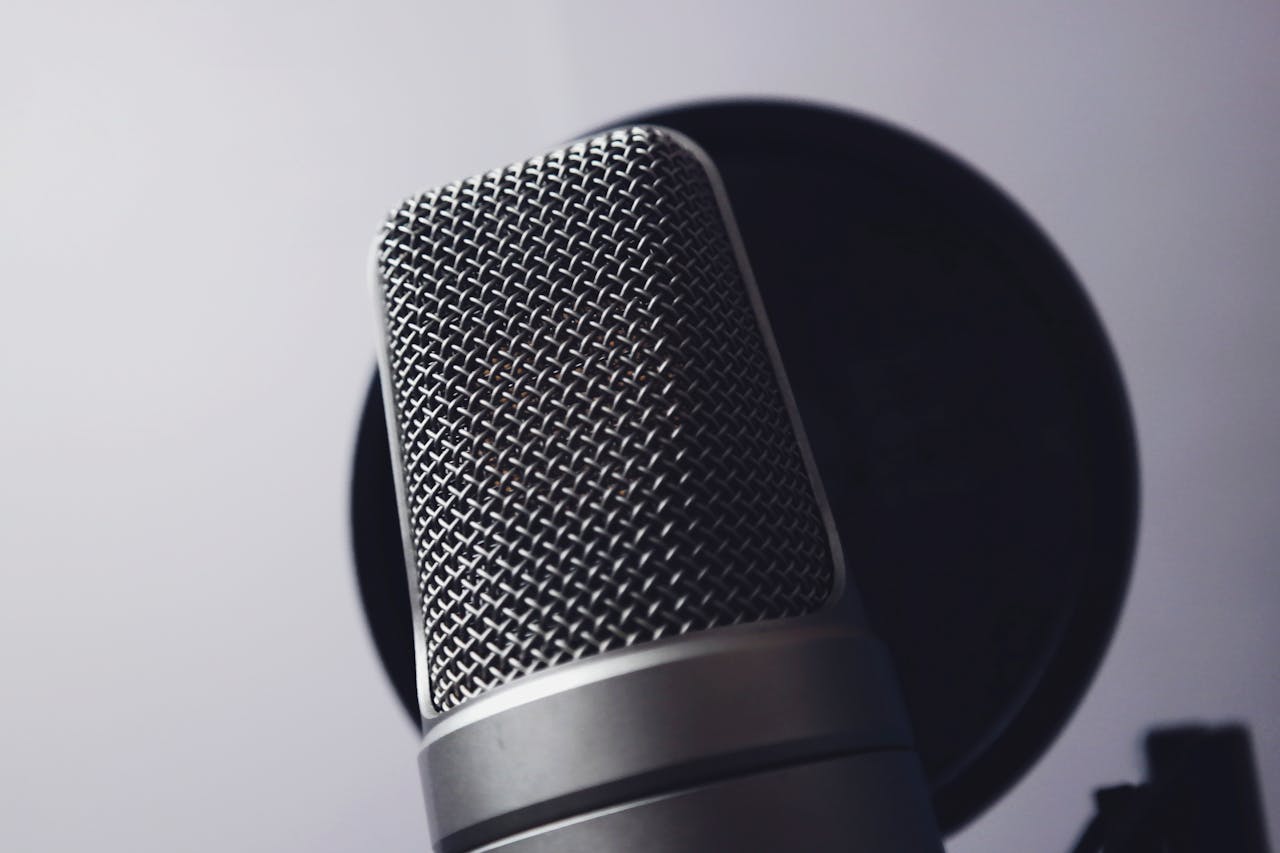The world of Music Distribution has changed dramatically over the past decade, with artists now choosing between digital and physical formats. In one corner, digital music distribution offers global reach, instant availability, and cost‑effective delivery. In the other, physical formats—CDs, vinyl, cassettes—provide tangible appeal, collector interest, and potential for higher per‑unit revenue. This blog examines the strengths and drawbacks of each distribution method, helping artists make the best choice for their career goals. Whether you’re a seasoned indie musician or just starting out, understanding Music Distribution options is vital for long‑term success.
Choosing between digital and physical Music Distribution can be confusing, especially if you’re unfamiliar with the nuances of each channel. The following sections compare reach, cost, marketing benefits, audience preferences, and practical considerations to guide your decision. By the end, you’ll gain clarity on which model aligns with your artistic vision and commercial objectives. If you’re ready to streamline your song releases or physical record efforts, this blog will help. Don’t forget to check our services section, pricing section, and about section as you build your strategy.
Understanding Music Distribution Today
The landscape of Music Distribution has evolved alongside technology, changing how music is created, shared, and monetized. Digital distribution platforms like Spotify, Apple Music, and Amazon Music allow artists to upload songs and reach global audiences instantly. Physical distribution—through CDs, vinyl, and limited‑edition formats—remains relevant for collector appeal, merchandising, and offline fans. Understanding these two models is essential for choosing the right path. In this section, we’ll explore what modern Music Distribution entails and why artists should weigh both options carefully before deciding.
Our focus on Music Distribution begins with a clear overview: digital options offer immediacy, convenience, and expansive reach, while physical methods foster connection, tangible branding, and potentially higher revenue per unit. This dual pathway empowers artists to tailor their distribution strategy based on audience, budget, and career goals. As we unpack more specifics, you’ll discover where digital excels and when physical makes sense. These insights will guide your preparations—whether for digital release optimization, manufacturing decisions, or integrated distribution strategies combining both formats.
What Is Digital Music Distribution?
Digital Music Distribution refers to the process of delivering your music to online streaming platforms and download stores. Once you work with a digital distributor like A3Tunes, your songs are encoded, tagged, and uploaded to major platforms such as Spotify, Apple Music, YouTube Music, and Amazon Music. This method supports global availability with minimal production cost and zero inventory risk. It also includes analytics, royalty accounting, playlist pitching, and metadata management. Digital distribution also enables rapid rollouts, making it ideal for timely releases. Understanding digital distribution is crucial for artists seeking maximum reach, real‑time fan engagement, and ongoing content strategies.
A3Tunes simplifies digital Music Distribution with transparent pricing, release scheduling tools, and designer‑level metadata services. Once your tracks are uploaded, they are typically live within days. You’ll receive reporting and revenue breakdowns from streaming services directly or through your distributor’s dashboard. Digital distribution’s real‑time analytics help you understand where your music’s resonating. This data‑driven feedback enables informed decisions on promotional investment, touring locations, and merch drops—all critical as you grow your brand. By optimizing metadata, cover art, and delivery timing, digital distribution can be a powerful marketing engine for modern artists.
Why Physical Music Distribution Still Matters
Despite digital prevalence, physical Music Distribution remains influential—especially in genres like rock, jazz, indie, and hip‑hop. Vinyl sales are surging, with fans valuing tangible items, album artwork, and collectible editions. Physical releases provide merchandise‑style revenue through CDs, tapes, and vinyl, often sold at shows or online stores. Additionally, physical music adds legitimacy—reviewers and tastemakers sometimes prioritize vinyl or CD promos. For artists seeking deeper connection with listeners, physical distribution reinforces fandom, opens licensing doors, and fuels traditional retail and event promos. Understanding the physical side of Music Distribution helps you diversify revenue and strengthen fan loyalty in an increasingly intangible industry.
Manufacturing physical music does incur costs—pressing, packaging, shipping, and maintaining inventory. But for many artists, the per‑unit revenue outweighs digital streaming income. Limited editions, colored vinyl, and bundled merch can increase profit margins. Physical music distribution also enables placement in brick‑and‑mortar record stores. These touchpoints can connect you with audiences resistant to streaming. Plus, during tours, CDs and vinyl serve as compelling backstage items. When paired with digital releases, physical products enhance brand presence and create deeper bonds with your audience—especially collectors hungry for tangible creative assets.
Key Factors in Choosing a Music Distribution Channel
Deciding between digital and physical Music Distribution depends on your goals, resources, and audience. Key factors include:
- Budget constraints: Digital requires minimal upfront cost; physical demands manufacturing and inventory.
- Target audience: Gen Z and casual listeners favor streaming, while vinyl/CD aficionados appreciate physical formats.
- Release frequency: Digital enables frequent singles; physical suits major album drops.
- Merch and tour plans: Physical products supplement live sales; digital fits online-first marketing.
- Long‑term strategy: Digital builds audience analytics; physical drives collector loyalty and press visibility.
Understanding these factors helps you craft a hybrid Music Distribution plan aligned with market reach, fan expectations, and revenue targets. We’ll explore each factor in detail in the sections below.
Reach and Audience Engagement
A key comparative for Music Distribution lies in how each channel connects you with listeners. Digital distribution unlocks streaming services, algorithmic playlists, and social media integration—making it easy to reach large, diverse audiences. You gain global access without geographic barriers. Conversely, physical distribution emphasizes local sales, in‑person events, and collector markets. It adds exclusivity and nostalgia, providing fans with keepsakes rather than simple audio streams. Deciding which channel maximizes your artistic vision and audience engagement is crucial. Both have unique strengths in shaping fan experiences and brand growth.
Digital Music Distribution leverages algorithms for discovery—curated playlists, radio-style features, and personalized recommendations drive sustained streams. Fans can buy and follow music within seconds, while share‑buttons keep the momentum viral. Meanwhile, physical distribution turns album purchases into experiences: fans unbox records, admire artwork, and frame vinyl. Physical music elicits deeper emotional connection. At live shows, selling physical albums can be lucrative and personal—fans meet the artist while taking home tangible art. By balancing both, you tap into digital’s reach and physical’s intimacy.
Digital-First Audience Benefits
Going digital-first in Music Distribution means your music is instantly discoverable worldwide. Platforms like Spotify, Apple Music, and Amazon Music host millions of users actively seeking new music. Distributors help pitch your tracks for playlists and algorithmic feeds—especially when your metadata aligns with trending genres. Digital presets also allow you to track engagement metrics such as streams, saves, and follower growth. This data informs your marketing strategy, tour routing, and content planning. Digital-first artists sustain listener attention through frequent single releases, EPs, and featured playlist content—all powered by efficient distribution networks.
Moreover, digital distribution supports fan segmentation. You can see where your streams are high and pivot your promotions accordingly—such as running localized ads or focusing on key regions when planning tours. Features like Spotify Canvas or Apple Music storytelling enhance visual branding. Even short video integrations, like YouTube‑embedded previews, tie back to streaming performance. You retain rights and royalties from streams that accumulate over time, enabling lifetime revenue through plays. For artists prioritizing rapid growth, data‑driven outreach, and content cadence, digital-first Music Distribution offers efficiency, scale, and insight.
Physical Experience Advantages
Physical Music Distribution offers unmatched sensory engagement—cover art, liner notes, and audio warmth resonate deeply with fans. Holding a vinyl or CD fosters collector pride and connection to the artist’s vision. Such tangible products are ideal for band merch tables and direct‑to‑fan sales, especially at live shows. Fans often pay premium prices for limited‑edition color variants, signed copies, or bundled offers. Physical releases also facilitate traditional media outreach: vinyl promos are accepted by radio stations and critics. Collectively, these elements reinforce brand authenticity and prevent digital oversaturation.
Merch tables featuring vinyl and CDs also create interactive experiences—fans register autograph signings and spontaneous purchases. Doing so deepens fan loyalty and provides memorable merch interactions. Additionally, resale potential among collectors enhances your album’s cultural longevity. Pressings can become coveted artifacts years after release. Physical Music Distribution also adds marketing touchpoints: record store events, in‑store performances, and local media tie‑ins. These opportunities often don’t exist for strictly digital artists. By embracing physical formats, you cultivate a fanbase that values artistry beyond digital playback.
Cost, Revenue, and Profit Margins
A central consideration for any Music Distribution path is the financial model. Digital distribution is economical—uploads cost little or nothing, with distributors taking a small fee or percentage. Revenue comes through streaming royalties, which pay per play. Physical distribution requires upfront investment—production, packaging, shipping, and inventory management—but delivers higher profit per unit sold. A well‑executed physical release can yield strong margins, especially for collectible formats. Standing at the intersection of cost and revenue, artists must calculate which Music Distribution path offers the best return on investment for their vision.
Digital distribution royalties vary by platform: Spotify pays roughly $0.003–$0.005 per stream, while Apple Music may pay higher. These accumulate over time, benefiting artists with consistent song catalogues. Physical revenue per unit, say $10 for a CD sold for $15, means higher immediate payout minus manufacturing costs. Vinyl exceeding $25 can yield even better margins. But production minimums and logistics introduce risk. Balancing these trade-offs is key: digital requires volume; physical requires upfront capital. Artists should project streaming revenue and physical sales targets, weighing turnaround times and inventory risk.
Financial Profile of Digital Music Distribution
Digital Music Distribution shines in cost efficiency. Uploading music via distributors comes with low overhead and no physical inventory. Most services charge flat fees or take a small percentage of royalties. This model enables flexible release strategies—singles, EPs, albums—without concern for production costs. Streaming platforms pay per stream, and while individual payouts seem small, hit volumes can generate steady, scalable income. Digital also enables lifetime revenue from back catalogue plays, podcast features, and sync placements. It’s ideal for indie artists prioritizing cashflow flexibility and iterative growth through continual releases.
Additionally, transparent analytics help you forecast earnings and refine release strategies. You can calculate required stream counts for revenue goals, compare earning potential by region, and adjust promotions accordingly. Digital-first artists spend less on logistics and reinvest funds into social media ads, playlist pitching, and creative campaigns. When scaled, digital distribution supports consistent income streams with minimal ongoing expenses. Yet it demands consistent output and fan engagement for momentum. For artists who want ongoing cashflow without large upfront investment, digital distribution offers a smart, low-risk path.
Financial Profile of Physical Distribution
With physical Music Distribution, upfront spending is inevitable—but so are higher per‑unit returns. Producing a batch of 500 CDs could cost $2–$4 per unit; selling each at $12–$15 yields strong profit. Vinyl pressing cost averages $10–$15 but can be sold for $25–$35. With limited editions or bundles, gross revenue per unit can exceed $50. Though production minimums and storage costs exist, physical sales create revenue punch with each release. For artists with dedicated fanbases, physical items can be sold at shows or via online stores, generating immediate cash flow and higher margins per product.
Physical releases also support premium pricing strategies. Signed albums, exclusive bundles, and deluxe packaging allow fans to pay more for collectible products. These limited releases often sell out, incentivizing fans to act quickly. Moreover, physical purchases often include vinyl‑only tracks, artwork, or liner notes, increasing perceived value. Physical music also plays a role in licensing—for example, film/TV, where labels often request physical promos. This can boost royalties from sync deals. In short, despite higher initial costs, physical distribution can offer outsized revenue per release for artists who master production volume and niche demand.
Practical Considerations & Logistics
Beyond cost and revenue, artists must think through logistical realities of Music Distribution. Digital releases require metadata preparation—artist name, ISRC codes, cover art, release date alignment. Physical distribution demands manufacturing timelines, packaging design, barcoding, customs handling, and inventory systems. Warehousing and shipping add complexity, as do returns. Each channel’s logistics impact timelines, risk, and labor commitments. Artists should weigh digital simplicity against physical intricacies, deciding whether to go DIY or hire distribution partners. Efficient logistics can determine release success, no matter which Music Distribution path you choose.
Digital logistics are largely automated: distribution platforms format tracks, deliver metadata, and manage royalties. Release calendars can be coordinated months ahead. Physical logistics involve managing production schedules—vinyl pressing plants can have long lead times (12‑20 weeks). Inventory storage or third‑party fulfillment services are often needed. Shipping to retailers or directly to fans includes tracking, customs documentation, and order management. Returns and unsold stock are also considerations. By planning logistics as part of your Music Distribution strategy, you avoid inventory bottlenecks and ensure smooth, timely delivery to fans and stores.
Digital Distribution Logistics
Digital Distribution requires organized metadata and delivery planning. Artists prepare ISRC codes, high-resolution artwork, lyrics, and publishing data. Distributors manage platform delivery and schedule release dates. This frees artists from manual upload processes. Digital also simplifies royalty collection and analytics. As long as your metadata is accurate, covering platforms, regions, and formats, delivery is straightforward. Some distributors also provide optional services—playlist pitching, social promo graphics, or pre-save campaigns. This digital logistics simplicity makes it accessible for independent artists to execute global releases from their home studio with minimal complexity.
Automation reduces manual work—once metadata is uploaded, the system formats it for each platform. Release scheduling ensures launches coincide across services. Reporting dashboards show streams, listener demographics, and payouts. You can build marketing plans around release dates and data‑driven insights. Closing gaps in metadata early ensures deliverability and avoids takedowns. For DIY artists, mastering metadata is key. For teams, coordinating via spreadsheets and distribution calendars keeps things efficient. Because inventory isn’t involved, digital logistics let you push music at speed—key for agile Music Distribution strategies and maintaining audience momentum after each campaign.
Physical Distribution Logistics
Physical Music Distribution calls for detailed planning: decide CD/vinyl quantities, order test pressings, confirm artwork specs, and reserve manufacturing slots. Vinyl plants may have long backlogs—24–48 week turnaround isn’t uncommon. Oversight of shipping, storage, and fulfillment is vital. Artists must handle barcodes, grow pre‑order campaigns, and prepare for returns or damaged stock. Booking retail placement or wholesale rollouts adds coordination. Without proper logistics, physical launches can stall or misalign with marketing campaigns. Many artists work with third‑party distributors who specialize in manufacturing, warehousing, and order processing to streamline this Music Distribution.
Packaging design matters for physical appeal and protection. For vinyl, gatefold sleeves and heavy inserts require precise spec reviews. For CDs, jewel case or digipak options affect production time. Shipping logistics vary: direct sales at merch tables avoid returns; online stores use fulfillment partners. Wholesale deals may require invoicing and retailer compliance. Unsold inventory may be recycled or discounted. Proper stock forecasts mitigate these issues. For independent labels or artists entering physical distribution, partnering with experienced CD/vinyl services and leveraging integrated fulfillment systems helps prevent headaches and keeps your focus on music and marketing.
Hybrid Strategies: Combining Digital & Physical
Many artists find that a hybrid Music Distribution strategy—combining digital release with targeted physical drops—offers the best of both worlds. Go digital to secure global exposure and streaming momentum, then follow up with limited‑edition physical products to capitalize on fan engagement and merchandising. Coordinated release timelines, bundled campaigns, and multi‑channel marketing deepen reach and revenue potential. A hybrid model also allows you to cater to diverse listener preferences: streaming‑first fans and collector communities alike. Smart execution of hybrid Distribution maximizes exposure, monetizes fandom, and enhances your brand image.
Start by releasing a single or album digitally, promote via playlists and social ads, and build awareness. Once initial traction is established, promote a vinyl or CD release—highlight that it’s limited‑edition—through your email list, social media, and merch tables. This timing rewards engaged fans who streamed first, turning digital interest into physical purchases. Use preorder bundles that include artwork, signed copies, or exclusive tracks. Press coverage for vinyl/posts in niche outlets also supports album narratives. This hybrid strategy leverages algorithms early and collector frenzy later—amplifying both digital streams and physical sales.
Coordinated Release Calendar
In a hybrid Music Distribution plan, timing is everything. Release digitally first to build streams and gather data. Aim for 4–8 weeks before physical product is available. During this time, analyze the regions where your music is gaining traction. Plan physical release logistics accordingly. Promote through email & social targeting fans in key areas. At launch, open vinyl/CD preorders, often with optional bonus content. Coordinate promos at local radio stations, record stores, and blogs. Align tour dates if possible. This staggered approach keeps momentum alive—streaming drives anticipation, physical drive sales, and tours reinforce both. Strategic calendars deliver cumulative impact across formats.
Recording precise timelines ensures each release stage has maximum impact. Use your distribution platform to set a digital release date. Schedule physical orders to arrive in‑hand at least two weeks before availability. Launch preorder campaigns one month before that. Tease vinyl pressings, show off album art and packaging on social. Host listening parties or online countdown events. When physical stock is live, share unboxing videos and promo bundles. Use data from digital release to pitch to media and plan shipping. This integration is part of successful Music Distribution—seamlessly weaving digital and physical to build buzz and revenue.
Split Marketing Efforts
Marketing is tailored to each distribution channel in a hybrid strategy. For your digital release, focus on playlist submissions, social ad campaigns, and email blasts promoting the upcoming album. Create clear messaging: “Listen now on Spotify, Apple Music, Amazon Music.” For the physical release, shift to physical reminders: “Preorder the vinyl/CD limited edition from our store.” Show packaging visuals and behind‑the‑scenes press clips. Use social ads targeting recent streamers to upsell a physical product. Collaborate with indie record stores for release events or in‑store signings. Generate content appealing to both collectors and casual listeners, tying both formats back to your brand.
Each channel has unique marketing hooks. Digital marketing leverages share-ready streaming links, embedded widgets, and playlist content. Dijital ads can use microtargeting around delivery areas tied to tour cities. Physical marketing focuses on visuals—album art, vinyl color options, limited edition messaging, autographed copies. Live show tie‑ins: show‑only merch packs or vinyl bundles. Email campaigns segment fans: frequent listeners see physical discount offers; casual streamers get digital playlist invitations. Cross‑channel retargeting ads can remind first‑wave listeners about limited physical stock. With this layered approach, you maximize reach while respecting distinct distribution dynamics.
Choosing the Right Music Distribution Pathway
Your ideal Music Distribution strategy depends on your goals, fan demographics, budget, and creative output. Here’s a decision guide:
- Just starting or on a tight budget? Go digital‑only—low cost, easy execution, global reach.
- Collector‑oriented audience or rock/jazz artist? Add physical releases to monetize loyal fans.
- Have an engaged tour base? Use hybrid strategy: promote physical products at shows and online.
- Want long‑tail revenue and analytics? Rely on digital streams and back‑catalog presence.
- Need higher profit per unit for special editions? Invest in vinyl or CD production for limited runs.
Each pathway offers distinct trade‑offs. Digital-first suits fast growth and flexibility; physical adds tangible connection and boutique revenue; hybrid merges the best of both worlds. Evaluate your fanbase, resources, and release rhythm before committing to a Music Distribution plan tailored to your career needs and artistic vision.
Why Choose A3Tunes for Your Music Distribution
As you assess Music Distribution options, A3Tunes offers expert navigation across digital and physical channels. Our platform simplifies distribution with transparent fees, metadata services, and analytics tools. We support global storefront deliverability, playlist pitching, and royalty collection. For physical distribution, we coordinate manufacturing, packaging, and fulfillment with trusted partners—so you can focus on music while we handle logistics. Visit our services section to see how we streamline every step across channels. Check our pricing section for clear rate structures. Learn more about our team and mission in our about section. With A3Tunes, your music reaches both digital and physical fans effortlessly.
Conclusion
Selecting between digital and physical Music Distribution is a strategic choice—powered by your budget, fanbase, and brand vision. Digital distribution offers unmatched reach, scalability, and data-driven insights. Physical releases provide deeper fan engagement, collector value, and stronger margins per sale. Many artists succeed with hybrid models that maximize both accessibility and brand connection. To choose what’s right for you, consider your release frequency, performance plans, and target demographics carefully. Whether launching worldwide digitally, pressing vinyl for superfans, or combining both, smart planning ensures your music finds the audiences it deserves—everywhere. Partner with A3Tunes to get it done.
FAQs (SEO‑Friendly)
- What is digital music distribution?
Digital music distribution is the process of delivering audio to streaming services and online stores via a distributor. It involves upload, metadata, cover art, and delivery to platforms like Spotify, Apple Music, and Amazon.
- What is physical music distribution?
Physical music distribution refers to manufacturing and selling music in tangible formats—CDs, vinyl, or cassettes. It includes production, packaging, and shipping to stores or fans.
- Digital vs physical music distribution: which pays more?
Digital offers long‑tail royalties per stream (often $0.003–0.005 each), while physical sells for $10‑$35 per unit, often yielding higher profit margins—though with upfront costs.
- Should I do digital-only distribution?
If you’re starting out or managing budget constraints, digital‑only is efficient. It offers global reach, no inventory, and fast release cycles—ideal for singles and testing the market.
- When is physical distribution worth it?
Physical distribution is worthwhile if you have a collector or genre‑focused audience, tour often, or want merchandising opportunities. Vinyl and CDs can deepen fan connections and boost revenue.
- Can I combine digital and physical distribution?
Yes—a hybrid strategy offers digital-first reach followed by limited-edition physical drops. Coordinated releases maximize streaming momentum and fan purchases.
- What logistics are needed for physical music distribution?
Physical distribution logistics include pressing, barcoding, packaging, storage, shipping, and inventory management—plus coordination with fulfillment or retailers.
- How do I pick a music distributor?
Choose a distributor based on costs, services (metadata support, analytics), speed, and physical distribution partners if you need physical products. A3Tunes offers both digital and physical options.
- How much does digital music distribution cost?
Costs vary: many distributors charge flat fees per release or annual subscriptions. Streaming revenue is paid through royalties, with no upfront manufacturing cost.
- How long does it take to distribute music digitally and physically?
Digital releases are typically live within 5–14 days after upload. Physical production, especially vinyl, can take 12–20 weeks. Plan accordingly for coordinated hybrid strategies.





